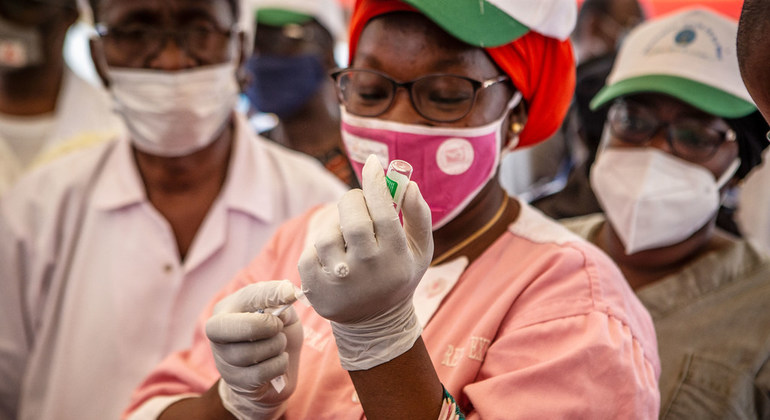New WHO data shows nearly 80 per cent of countries on the continent, or 42 out of 54, are off track on meeting the global target set in May by the World Health Assembly, if the current rate of vaccine deliveries and inoculations continues.
The Assembly, which is the world’s highest health policy-setting body, challenged all Governments to vaccinate 10 per cent of their population by the end of September.
Deadline fast approaching
So far, nine African countries, including South Africa, Morocco and Tunisia, have met the goal, and three more could be joining them at the current pace.
Two additional countries could meet the target if vaccinations are sped up.
“With less than a month to go, this looming goal must concentrate minds in Africa and globally,” said Dr Matshidiso Moeti, WHO Regional Director for Africa.
“Vaccine hoarding has held Africa back and we urgently need more vaccines, but as more doses arrive, African countries must zero in and drive forward precise plans to rapidly vaccinate the millions of people that still face a grave threat from COVID-19.”
Africa received nearly 21 million vaccine doses in August through the COVAX solidarity initiative: an amount equal to the previous four months combined.
Fairer distribution possible
More vaccines are expected from COVAX and the African Union by the end of the current month, WHO said, which could see enough doses delivered to meet the 10 per cent target.
Even though countries ramped up vaccinations following the increased shipments last month, 26 nations have used less than half their doses.
Overall, Africa has received 143 million vaccines, and 39 million people, or roughly three per cent of the continent’s population, are fully inoculated. In comparison, the figure is 52 per cent in the United States and 57 per cent in the European Union.
“The inequity is deeply disturbing. Just two per cent of the over five billion doses given globally have been administered in Africa. Yet recent rises in vaccine shipments and commitments shows that a fairer, more just global distribution of vaccines looks possible,” said Dr. Moeti.
New campaign strategy
WHO urged countries to continue to address operational gaps and continually improve, adapt and refine their vaccination campaigns.
Thirty governments have submitted data on operational readiness which reveals that one in two has not conducted reviews critical to assessing and fine-tuning progress
Furthermore, one in three has not updated their National Vaccine Deployment Plans, which instruct all COVID-19 vaccination actions in each country.
WHO is providing countries with tailored policy advice and technical guidance and support to improve logistics, planning and monitoring.
Caseloads still high
Meanwhile, the agency reported that COVID-19 cases are declining slightly in Africa but remain “stubbornly high”.
An increase in new cases in Central, East and West Africa, pushed numbers up to nearly 215,000 for the week ending 29 August.
Twenty-five countries, over 45 per cent, are reporting high or fast-rising caseloads, while over 5,500 deaths were reported during the same period.
Dr. Moeti underscored the need to remain vigilant.
“Although Africa’s third wave peaked in July, the decline in new cases is at a glacial pace – far slower than in previous waves,” she said. “The pandemic is still raging in Africa and we must not let our guard down. Every hour, 26 Africans die of COVID-19.”
Eye on variants
WHO is closely monitoring the spread and evolution of COVID-19 variants in Africa.
The highly transmissible Delta variant has been found in 31 countries, while the Alpha variant has been detected in 44 countries and the Beta variant in 39.
The new C.1.2. variant, first reported to WHO in July, has been identified in 114 cases in South Africa. Four other African countries have reported single cases, while cases have been very low internationally.



